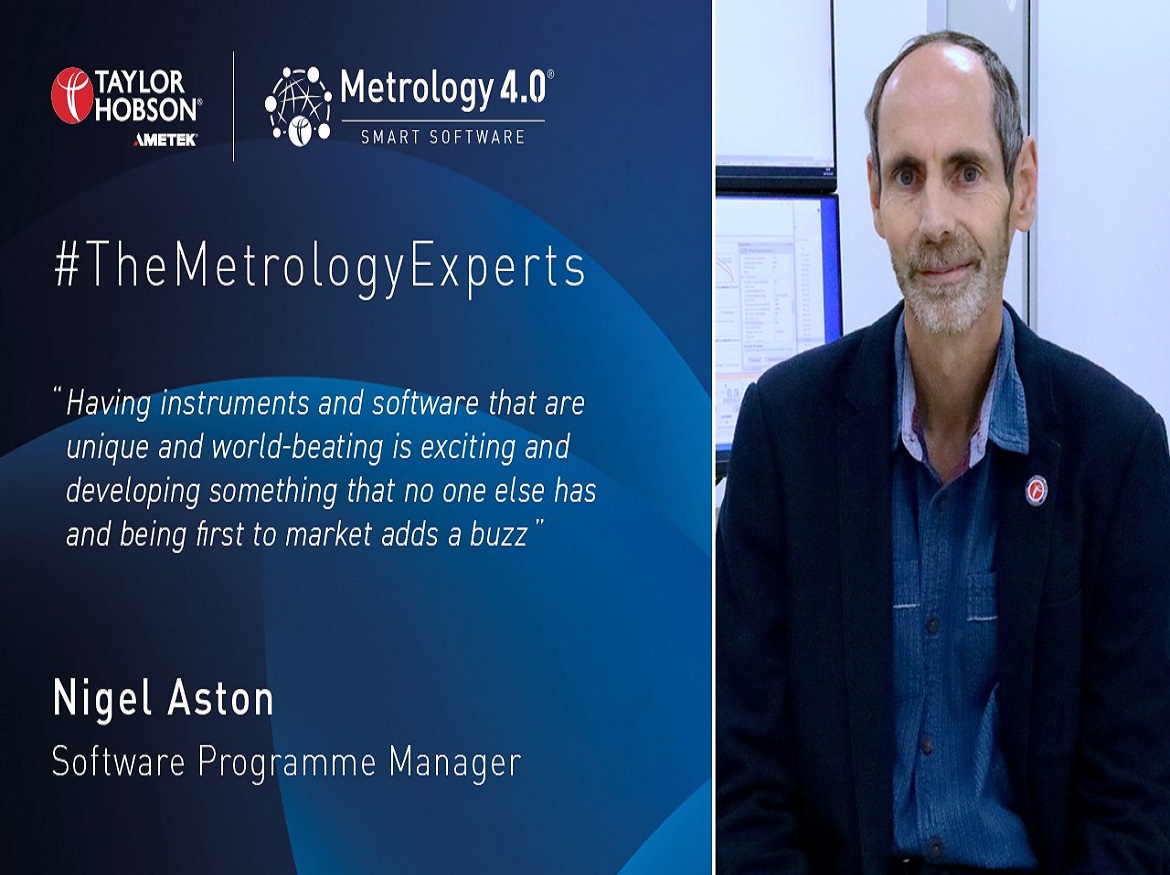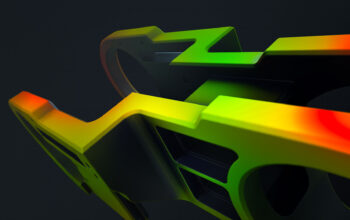If measuring instruments are the aircraft, then metrology software programmes are the pilots. The more skilled the pilots, the smoother the flights. That’s why we invest in our software development to make it the best in the market 🏆 Today, let’s meet the leader of the team behind the powerful metrology software – Nigel Aston – Software Programme Manager at Taylor Hobson to learn how they do it!
1. How did you start your career in Metrology software? What makes you excited about working in this field?
Seems many years ago now. I joined Taylor Hobson in January 1987, memorable to me for the snow at the time. Reporting to Shanti Singardia in a software team of about twenty people located at the back of the factory in what is now Surface assembly. Taylor Hobson offered software development, algorithms and a variety of interesting products.
Having instruments and software that are unique and world-beating is exciting and developing something that no one else has and being first to market adds a buzz.
2. What was the first metrology software you worked on? What advancements have been made in our metrology software since then?
I started working on software for the Talyrond 250 and 300 systems. This software ran under Microsoft DOS on a PC. However, PCs were rare in those days (just two in the department to start with) so initially, most of the development was done using a Data General mainframe. The software was written primarily in C. Optimization of algorithms for form-fitting, filtering, and parameter calculation was hugely significant as well as a limitation on the size of the application – which needed to fit on 5¼“ floppy discs (720k bytes). The User Interface for the early applications would today be considered as ‘clunky’, with navigation around the screen more likely to happen from up/down/left/right button presses and function keys than mouse clicks. This advanced to a graphical user interface under Windows with the Ultra software (menus, mouse-driven, dialogues, charts) and the CCI software with dedicated screens for functions driven by larger buttons.
Video: Touch screen interface on the Surtronic R-150
Now, thanks to advances in development tools, some of the latest graphical techniques can be used to generate our Metrology applications, with #visualisation in Metrology 4.0 providing a live simulated view of the instrument being an inspired advance. The initial Metrology applications had simple printers (dot matrix style) with the software engineers writing code to position every dot. Reporting in the latest applications leaves the handling of the printing details to specialised drivers, and screen layouts for results in the likes of Metrology 4 are more akin to desktop publishing with the flexibility and customisation on offer.
3. What makes Metrology 4.0 software different to the other measurement software you have worked on?
In the days of the DOS applications, memory management was crucial. Many hours were spent tuning the memory system so that the relevant display or calculation module could be swapped into the working memory. Memory allocation for data similarly needed careful handling. Thankfully with the advance of operating systems and development tools and libraries software developers can now concentrate on higher-level behaviour. Metrology 4.0 is a replacement for Ultra and controls both #surface and #roundness instruments. The application is written mainly in C# with the WPF library providing the ability to create a GUI that is more advanced than other measurement software. For both developers and testers, as well as end users, the live instrument view significantly improves appreciation of instrument behaviour through sequences like calibrations, centre and levelling as well as user programmes. The user program capability is extensive compared to other measurement software, simple to create, and with many functions.
Video: Introducing Metrology 4.0 Smart Software
4. How does Metrology 4.0 software aid industrial manufacturers with Industry 4.0?

Metrology 4.0 ‘Smart Software’ was named with Industry 4.0 in mind (thanks Nick!). Industry 4.0 represents the fourth industrial revolution with #automation, #connectivity and big #data at its heart. Metrology 4.0 provides automated measurement through its rich user programming interface allowing the user to learn and manually create a series of movements, measurements and processing steps to automatically measure simple and complex parts and produce sophisticated reports and results data. This is simplified through the Production Interface feature which also integrates into the statistical process control software Q-DAS. The control of a variety of linear and rotary stages further improves the ability to both achieve and automate measurements in many orientations and hard-to-reach positions.
Metrology 4.0 continues to evolve with more features planned that will support Industry 4.0 automation and connectivity. This includes measurement programming based on a CAD model of a part and control via robot interaction for part loading.
5. What achievement have you been most proud of over the recent years?
Delivering the first Metrology 4.0 release was one of the highlights, which supported the first PGI Novus instruments.
This involved a team of many people, from visionists, software developers, applications engineers and many more. A big Taylor Hobson team effort. Since then, Metrology 4.0 has been extended to support other instrument ranges, with TR5xx being the most significant. In my early days, the completion of the Form TalySurf Series DOS UI was a highlight and later the first release of the TalySurf CCI. These first releases of applications for instrument ranges do represent landmarks; they are always a team effort though and it is pleasing to have made a contribution.
6. What is your vision for Metrology software at Taylor Hobson in the future?
How about VR – flying around the part’s surface taking the smooth or bumpy path of the non-contact or contact gauge/stylus?
There are physical limits to the speed of moving over a surface and capturing data, but after that, processing that data, the user wants immediate results. So future software is likely to focus on throughput, presentation, communication and the device that runs the metrology software. The end goal is to instantly process data and have results available for the next machine, or user, in the process chain to make its decisions.
Improvements can be made when it comes to setting up all the measurements required on complex parts. For instruments like Talyrond and PGI Novus, a goal for Metrology 4.0 is that the system extracts information from the user’s 3D CAD model of the part including tolerance calls out and creates an automated measurement program, minimising the existing manual processes. The instrument could be controlled remotely, possibly via a robot loader, with measurement results feeding into the user’s big-data store. The results in summary form are whizzed off to relevant people, perhaps a process manager in another country.
Video: Measurement of a diesel injector nozzle based on a 3D CAD model
There is scope for #AI in metrology with an instrument ‘learning’ what’s good and bad and making improvements to the measurement processes, for example, gauge calibrations. Its relevance can be magnified if information from multiple systems can be combined through inter-communication between measuring systems, especially within a customer’s factory/s.
Thanks, Nigel, for an informative interview. We wish you and the team the very best with Metrology software advancements. For our audience, click here to learn more about our best-in-class Metrology 4.0 software 👉 Metrology 4.0 Software | Taylor Hobsons








